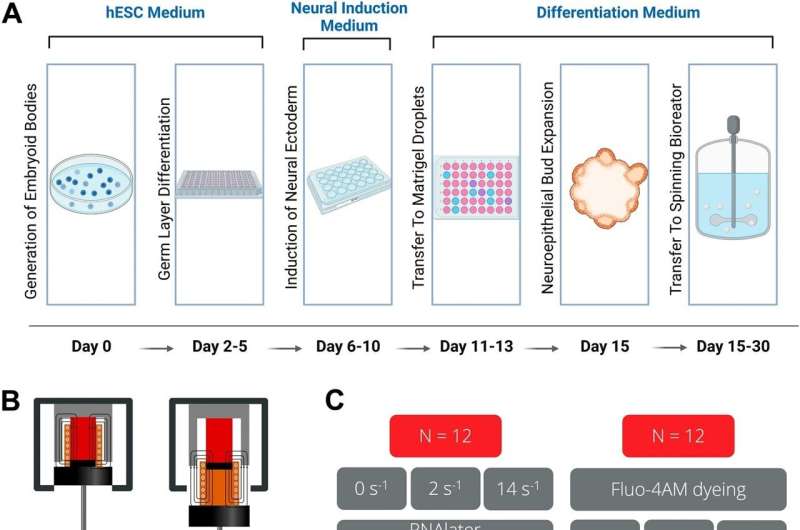This article has been reviewed according to Science X's editorial process and policies. Editors have highlighted the following attributes while ensuring the content's credibility:
fact-checked
peer-reviewed publication
trusted source
proofread
Study identifies the top three genes responsible for traumatic brain injury complications

The severity of traumatic brain injury (TBI) has been underscored in the last decade as doctors seek to understand its role in neurological diseases like chronic traumatic encephalopathy (CTE), a progressive and fatal brain disorder caused by repeated head injury that gained notoriety for its markedness among NFL pros including Mike Webster and Aaron Hernandez.
To better understand TBI in humans without the use of mice, primates, or postmortem human tissue, researchers at Carnegie Mellon University and the University of Pittsburgh Medical Center recreated mild and moderate TBI on human cerebral organoids to analyze TBI effects on the brain. The results were astounding. Using RNA sequencing, a method used to discover which genes are turned on or off in cells, the researchers identified the top three genes responsible for TBI complications
"This is a new approach to deepening our understanding of traumatic brain injury using engineered human-specific models." said Pascal Zinn, neurosurgical oncologist at UPMC Hillman Cancer Center. "We hope this research will save lives."
To begin, the team exposed stem cells to cerebral nutrients to induce production of neural cells. Later, the cells were spun to form the characteristic small spherical shape of an organoid. The team then subjected the formed organoids to mild and moderate loading conditions to mimic brain injury and examined their genetic response to the stimulus.
"This is the first time researchers have explored RNA sequencing to understand what happens both immediately after someone experiences a blow to the head and possible consequences in the long term," explained Susana Beltrán, first author of the paper published in Scientific Reports. "We found that the genes responsible for cell death, cancer cell reproduction, and white blood cell regulation were upregulated after impact."
To verify the severity of the impact, the team used live imaging to identify the number of calcium ions present. More calcium equated to a more severe trauma.
These findings are fundamental as medical professionals seek treatment plans for TBIs.
"We can imagine athletes susceptible to concussions adding a supplement to their regimen that can target those genes at risk of upregulation after TBI to either prevent or slow disease progression," said Beltrán. "Even beyond brain injury, we want to set the standard that human organoids can be used to model human disease."
"This is one of those examples of the wonderful relationship between The University of Pittsburgh and CMU where the barriers are tremendously low for us to collaborate in interdisciplinary ways," LeDuc emphasized.
More information: Susana M. Beltrán et al, Characterization of neural mechanotransduction response in human traumatic brain injury organoid model, Scientific Reports (2023). DOI: 10.1038/s41598-023-40431-y



















